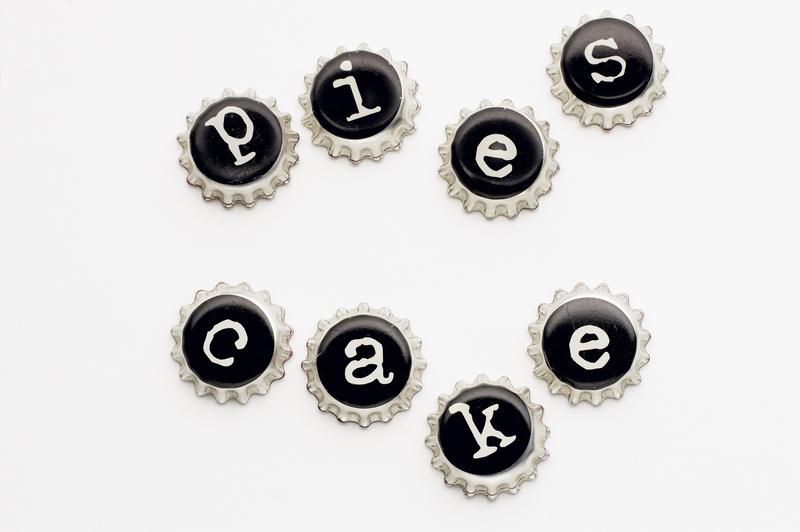How to Keep the Environment Clean While Disposing PPE Waste
The global COVID-19 pandemic has greatly increased the use of Personal Protective Equipment (PPE), leading to a surge in waste products like masks, gloves, face shields, and gowns. While necessary for our safety, improperly discarded PPE has become a serious environmental threat. Learning how to keep the environment clean while disposing PPE waste is crucial to protect public health and the ecosystem.
This in-depth guide offers comprehensive information on the safest and most responsible methods to manage PPE disposal, to ensure our environment remains clean and sustainable for future generations.
The Environmental Impact of PPE Waste
Before exploring best practices for eco-friendly PPE disposal, it is important to understand why it matters. PPE products, commonly made of plastics such as polypropylene, are not biodegradable. Improper disposal leads to:
- Pollution: PPE materials can persist in landfills and litter urban and natural environments for centuries.
- Wildlife Threats: Animals may ingest or become entangled in discarded PPE, leading to injury or death.
- Microplastic Formation: Over time, PPE breaks down into microplastics, contaminating soil and water.
- Public Health Risks: Improper PPE disposal increases exposure to pathogens and hazardous chemicals.

Understanding PPE Waste
PPE waste includes all equipment and materials designed to protect individuals from infectious agents or hazardous substances. Common items include:
- Disposable surgical masks and N95 respirators
- Single-use gloves (latex, nitrile, vinyl)
- Gowns, aprons, and head covers
- Face shields and goggles
- Shoe covers and protective footwear
Proper identification of PPE waste is the first step in responsible management and disposal.
Why Proper PPE Disposal is Critical for the Environment
Improper waste management not only pollutes our planet but also undermines efforts to stem the spread of infectious diseases. Safely disposing of PPE waste helps limit environmental contamination, reduces landfill burden, and minimizes risks to sanitation workers and the public.
PPE Waste in Numbers
Recent studies estimate that globally, over 129 billion face masks and 65 billion gloves were used per month during the height of the pandemic. The majority of these ended up in landfills, waterways, or as litter--making sustainable PPE waste management an urgent priority.
How to Keep the Environment Clean While Disposing PPE Waste: Practical Steps
1. Segregate PPE Waste from Regular Trash
- Separate PPE items at the source: Use clearly labeled bins dedicated to PPE waste (at offices, clinics, homes, or public spaces).
- Color-code bins (e.g., red or yellow) to avoid mixing with recyclables or general waste.
Segregation ensures that hazardous materials do not contaminate recyclable waste streams and allows for specialized treatment.
2. Use Eco-Friendly Alternatives Where Possible
- Opt for reusable masks and gowns: When not in high-risk areas, choose washable PPE made from sustainable materials.
- Encourage use of biodegradable materials:
- Look for masks and gloves made from natural fibers.
- Choose PPE with certified compostable or eco-friendly certifications.
Switching to greener alternatives reduces the overall environmental footprint of PPE.
3. Follow Proper PPE Removal Techniques
- Avoid touching the outside surface of masks and gloves.
- Dispose of used items immediately in the designated PPE waste bin.
- Sanitize hands thoroughly after handling PPE.
Correct removal and handling of used PPE not only protects individuals but also limits contamination of other waste.
4. Bag and Seal PPE Waste Correctly
- Always use sturdy, leak-proof bags: Double-bag PPE waste to prevent leakage or accidental exposure during transport.
- Seal bags tightly before disposal.
Proper containment reduces the risk of littering and ensures safer handling by waste management teams.
5. Dispose in Accordance with Local Guidelines
- Check with local municipalities or waste authorities for dedicated PPE disposal instructions.
- Many regions have established special collection points or schedules for pandemic-related waste.
Failure to follow local regulations may lead to fines and, more importantly, environmental harm.
6. Do Not Recycle PPE in Regular Bins
- Disposable masks and gloves should never be thrown into recycling containers.
- PPE cannot be processed in standard recycling facilities and will contaminate recyclable materials.
PPE must be treated as hazardous or medical waste.
7. Support and Use Medical Waste Disposal Services
- For large PPE waste generators (hospitals, clinics, schools), contract licensed medical waste management companies.
- These specialists use environmentally safe methods such as autoclaving or incineration with pollution controls.
Professional services ensure compliance and minimize risks to the environment and public health.
8. Participate in Community PPE Waste Collection Programs
- Engage in local or national initiatives for PPE waste: Many governments and organizations have set up designated bins in public places.
- Some NGOs collect PPE waste for specialized recycling or safe destruction projects.
9. Raise Awareness and Educate Others
- Talk to friends, family, and colleagues about the importance of clean PPE disposal.
- Share information about dedicated waste bins and eco-friendly PPE options.
- Organize or participate in local environmental campaigns regarding PPE waste management.
Education is critical to change behaviors and foster a culture of environmental responsibility.
Innovative Solutions and Technologies to Reduce PPE Waste Impact
Researchers and entrepreneurs are exploring new ways to handle the global surge in PPE waste. Some of the exciting solutions include:
- Biodegradable PPE: Scientists are developing masks, gloves, and gowns from materials that break down naturally.
- PPE Recycling Programs: Specialized companies can recycle PPE into plastic lumber, construction materials, or even new PPE items.
- Advanced Waste Treatment: Techniques like plasma gasification and pyrolysis convert contaminated waste into clean energy.
- Corporate Take-Back Programs: Some manufacturers offer return programs to ensure safe end-of-life management for their PPE products.
What You Can Do at Home
Even on a small scale, every effort counts when it comes to keeping the environment clean while disposing PPE waste:
- Designate a special bin for PPE in your home.
- Supervise children to ensure they never litter masks or gloves.
- Reduce consumption by wearing reusable PPE where possible.
- Never flush PPE items down the toilet or sinks -- this leads directly to water pollution and sewer blockages!
Challenges of PPE Waste Disposal
Despite best efforts, some challenges persist:
- Cost: Specialized waste management can be expensive, especially for small businesses or rural communities.
- Lack of Infrastructure: Not all regions have the facilities needed for medical waste processing.
- Public Compliance: Many people are unaware or unconcerned about proper PPE disposal.
- Pandemic Surges: Unexpected increases in waste during outbreaks can overwhelm even the most prepared systems.
However, innovation, awareness, and collective action can overcome these hurdles.
Case Studies: Successful PPE Waste Management Initiatives
- India's Mask Recycling Projects: In cities like Pune, local governments and startups have teamed up to collect and convert used masks into construction materials--demonstrating circular solutions.
- UK's TerraCycle PPE Recycling Program: TerraCycle runs a national scheme to collect, clean, and recycle masks and gloves into raw plastics for benches and bins.
- Japan's Eco-Mask Innovations: Manufacturers in Japan have created washable face masks made from organic fibers and recycled PET bottles.
How Businesses and Institutions Can Nurture Clean PPE Waste Practices
Major PPE waste generators (offices, schools, transportation hubs) can make a big difference by:
- Implementing PPE-only waste bins throughout their premises.
- Training staff on correct disposal procedures and environmental priorities.
- Partnering with certified waste management contractors.
- Auditing and regularly reviewing PPE waste protocols.
The Role of Government Policy and Regulation
Government can help keep the environment clean from PPE waste by:
- Mandating segregation of medical and general waste streams.
- Enforcing heavy penalties for littering or improper disposal of PPE.
- Providing grants and incentives for recycling innovations.
- Launching national public education campaigns.
- Standardizing labeling and color-coding for PPE waste containers.

Conclusion: Protect the Earth, One Mask at a Time
Keeping the environment clean while disposing PPE waste is more than just a personal hygiene issue--it is a global environmental imperative. From simple steps like using the right bins, to supporting advanced recycling initiatives, we can all contribute to a cleaner, safer planet.
Remember, every piece of properly disposed PPE waste prevents pollution, saves lives, and keeps our ecosystems healthy. Choose reusable, opt for eco-friendly options, and spread the word in your community!
By making conscious choices today, we pave the way for a greener tomorrow--ensuring that the tools we use to protect our health do not harm our world.
Frequently Asked Questions (FAQs) on PPE Waste Disposal
- Can I recycle disposable masks in regular recycling bins?
No. Disposable masks should never be recycled with general plastic or paper products. They require specialized disposal to prevent contamination. - How do I safely dispose of PPE waste at home?
Double-bag used items, seal tightly, and place them only in the designated PPE or hazardous waste bin. - Are biodegradable PPE products effective?
Yes, many biodegradable PPE items offer comparable protection and decompose more rapidly in the environment, reducing long-term pollution. - What should businesses do with PPE waste?
Implement clear disposal protocols, use licensed waste firms, educate staff, and ensure compliance with local rules. - What happens if PPE is flushed down toilets?
It causes blockages, damages sewage systems, and increases the risk of microplastic pollution in water bodies.
Take Action for a Clean Environment Today!
If we all act responsibly, the environmental impact of PPE waste can be minimized. Your everyday choices matter--dispose, reduce, and recycle with the planet in mind!
